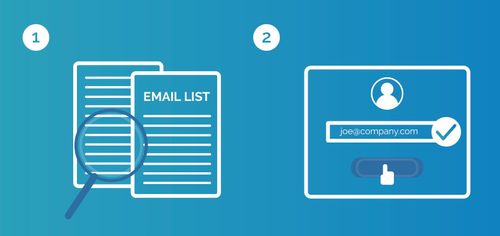In today's digital age, email communication remains a cornerstone of business and personal interactions. Whether you're sending marketing campaigns, transactional notifications, or personal messages, one thing remains paramount: the need for an accurate and reliable email verification system. This comprehensive guide will unravel the mysteries surrounding email verification, its significance, methods, and best practices, ensuring your emails land in the right inbox every time.
The Significance of Email Verification
Email verification is the process of confirming the validity and deliverability of an email address. It plays a pivotal role in maintaining a healthy sender reputation, increasing deliverability rates, and minimizing the chances of being marked as spam. Here's why email verification is crucial:
1. Reducing Bounce Rates
- Email verification helps you identify and remove invalid or non-existent email addresses from your list, reducing bounce rates and improving your sender reputation.
2. Enhancing Deliverability
- Clean email lists lead to better inbox placement, ensuring that your emails reach your intended audience.
3. Protecting Sender Reputation
- High bounce rates and spam complaints can tarnish your sender reputation. Email verification helps maintain a positive reputation with ISPs (Internet Service Providers).
4. Cost-Efficiency
- Sending emails to valid recipients saves resources, time, and money, as you're not wasting resources on undeliverable emails.
Methods of Email Verification
There are various methods to perform email verification, each with its own advantages and use cases. Here are some popular methods:
1. Syntax Validation
- Syntax validation checks if an email address follows a valid format (e.g., [email protected]). While it's a basic step, it doesn't guarantee deliverability.
2. Domain Verification
- Domain verification validates the domain associated with an email address, ensuring it exists and is configured to receive emails.
3. SMTP Verification
- SMTP (Simple Mail Transfer Protocol) verification involves sending a test email to the address and checking if it's accepted by the recipient's mail server.
4. API-Based Verification
- API-based verification utilizes third-party services and databases to verify email addresses instantly. Services like Snov.io and ZeroBounce provide robust API solutions for this purpose.
Best Practices for Effective Email Verification
To make the most of your email verification efforts, consider these best practices:
1. Regular List Cleaning
- Regularly clean your email lists to ensure accuracy. An outdated list can harm your sender reputation.
2. Use a Reliable Email Verification Service
- Invest in reputable email verification services like Snov.io, ZeroBounce, or NeverBounce for accurate results.
3. Implement Double Opt-In
- Encourage users to confirm their email addresses through a double opt-in process, enhancing list quality.
4. Monitor Sender Score
- Keep an eye on your sender score and take corrective actions if it starts to decline.
5. Respect Unsubscribe Requests
- Honor unsubscribe requests promptly to maintain a positive sender reputation.
Commonly Asked Questions About Email Verification
Q1. Can email verification eliminate all bounce rates?
- While email verification significantly reduces bounce rates, it cannot eliminate them entirely. Some bounces may still occur due to temporary issues with the recipient's mailbox.
Q2. Is email verification a one-time process?
- No, email verification should be an ongoing process. Email addresses can become invalid over time, so regularly cleaning and verifying your list is essential.
Q3. How can I choose the right email verification service?
- Consider factors like accuracy, speed, pricing, and integration capabilities when choosing an email verification service.
Q4. What is the difference between hard bounces and soft bounces?
- Hard bounces occur when the recipient's email address is invalid or non-existent. Soft bounces are typically temporary issues, like a full mailbox.
Q5. Can I perform email verification manually?
- While you can perform basic syntax validation manually, automated email verification tools are recommended for accuracy and efficiency, especially for larger email lists.
In conclusion, email verification is an indispensable component of email marketing and communication strategies. By understanding its significance, employing the right methods, and following best practices, you can ensure that your emails reach the right audience and maintain a sterling sender reputation. Don't underestimate the power of clean, verified email lists in enhancing your email marketing success.



